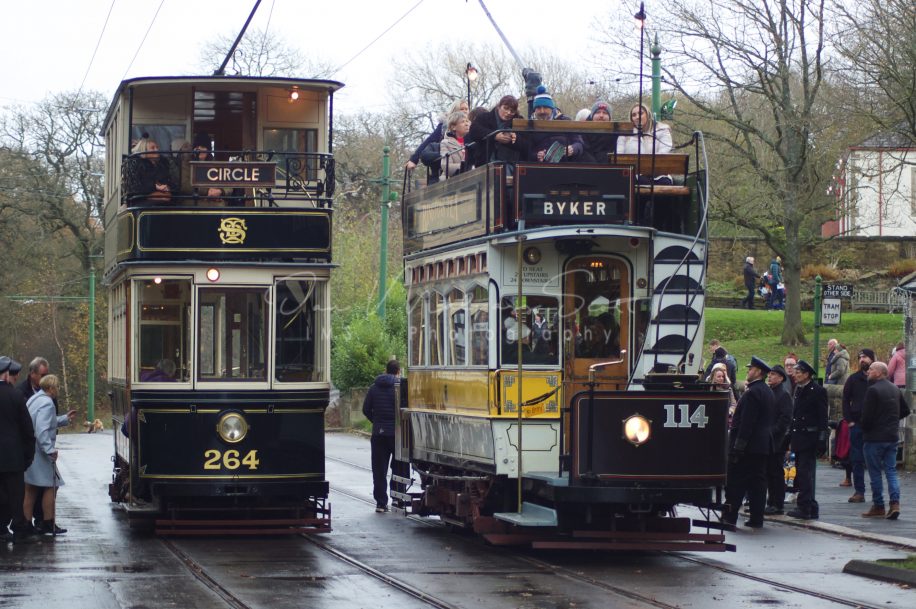![]()
Trams, Beamish Museum, Co. Durham
Number 264 is a Preston car dating from 1907 and is in service after a major overhaul was completed in 2016.
The Beamish Tramway is 1.5 miles (2.4 km) long, with four passing loops. The line makes a circuit of the museum site forming an important element of the visitor transportation system. It is also the longest preserved tramway in the country.
The first trams began operating on a short demonstration line in 1973, with the whole circle in operation by 1993. It represents the era of electric powered trams, which were being introduced to meet the needs of growing towns and cities across the North East from the late 1890s, replacing earlier horse drawn systems.
Newcastle 114 was built in 1901 by Hurst Nelson and Co. of Motherwell for Newcastle Corporation Tramways, one of a batch of 24 open-top short-canopied ‘A- Class’ vehicles delivered to replace horse trams. It is the only example of its type to have survived. As built, it was fitted with 53 wooden seats, and ran on a 6′ 6″ wheelbase Brill 21E truck powered by GE 58 motors with BTH B3 controllers. They received multiple rebuilds while in Newcastle service, including the fitting of a top cover for the upper deck seating. Latterly consigned to the Gosforth Park scrap siding, in 1941 it and most of its sister trams were instead sold to Sheffield Corporation to replace war damaged vehicles. Further rebuilt by Sheffield to be totally enclosed and vestibuled, it entered service in their fleet as No. 317, before finally being withdrawn in 1951.
The tram’s body was later rediscovered on an arable farm near Scunthorpe, and arrived at Beamish in 1987 via various other locations. The museum restored it to 1901 condition, using a suitably modified truck with GE 270 motors sourced from Oporto in 1989, and rebuilt BTH B18 controllers. It entered museum service in May 1996. It received a mid-life overhaul in 2011.


